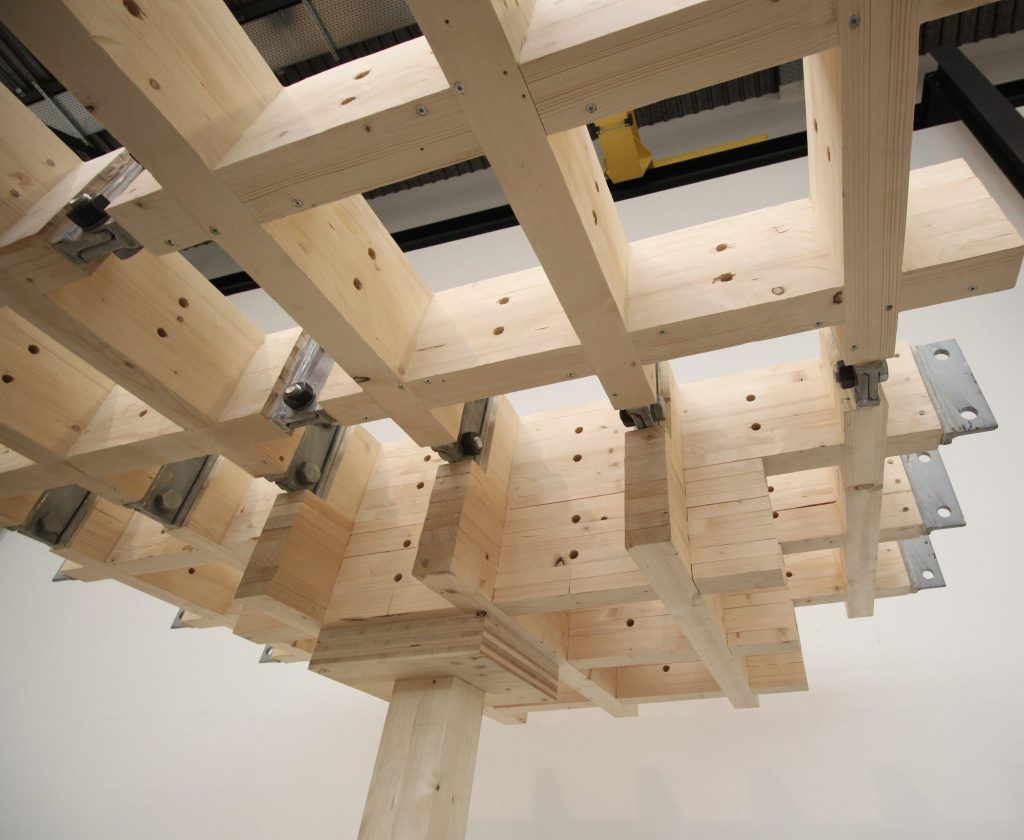
Summary
The construction industry plays a major role in the high levels of resource consumption and waste observed nowadays. In this context, component reuse arises as a solution to divert valuable structural elements from landfilling and avoid the production of new ones. However, the lack of circular economy principles in existing structures hinders the extraction and procurement of reusable components. To tackle this issue, the RE:SLAB project presents the development of a new load-bearing system designed for disassembly and reassembly over multiple building lifespans. Beyond conventional considerations of modularity and reversibility, the proposed system provides designers with a minimum kit of parts that is capable of spatially localized adjustments and exceptionally diverse building layouts, e.g., related to floor geometry, spans between supports, load conditions, and element distribution. Therefore, it enables adaptation to functional design requirements that are hard to predict over long-term social developments. Besides, attention is also given to low-tech assembly and disassembly processes, embodied environmental impacts, and manufacturing costs. All aforementioned features are meant to increase the reuse potential of the components. Widespread adoption would drastically reduce the need for future manufacturing, a necessary strategy for reaching sustainability.
General information
- PI: Edisson Xavier Estrella Arcos (SXL / IA)
- Start date: 01.08.2022
- Duration: 5 months